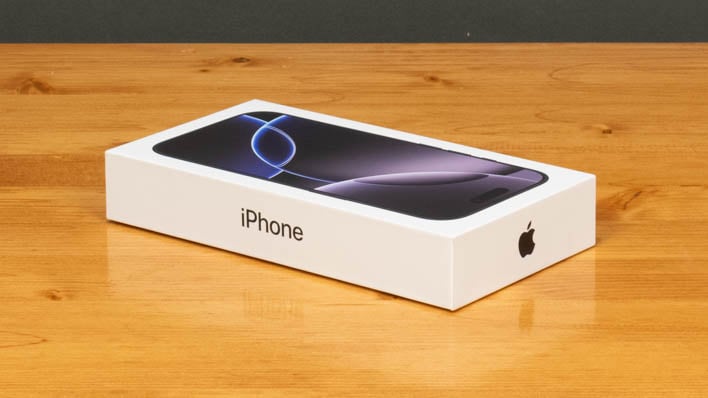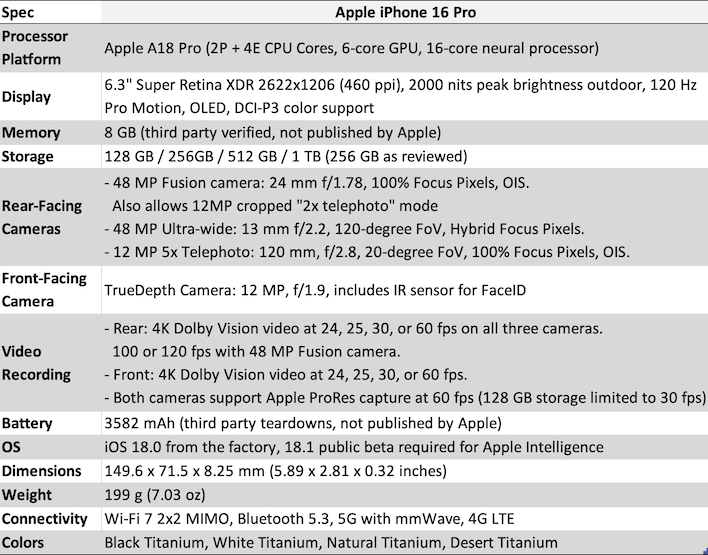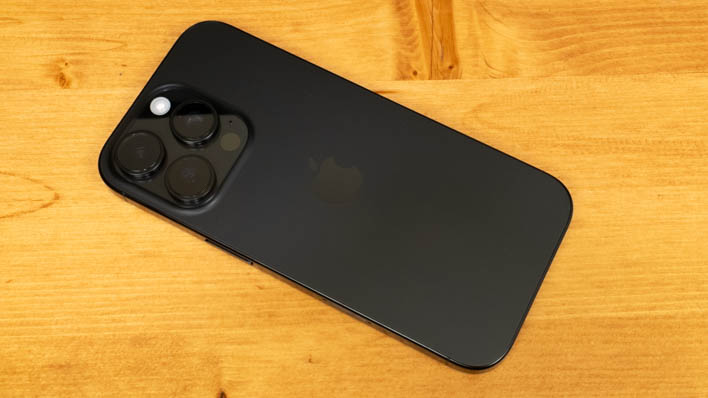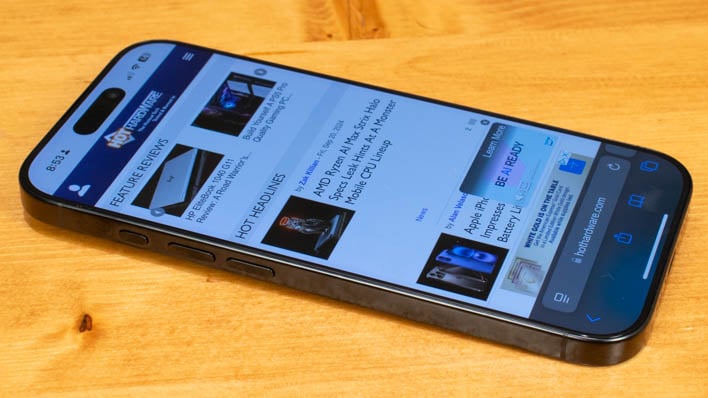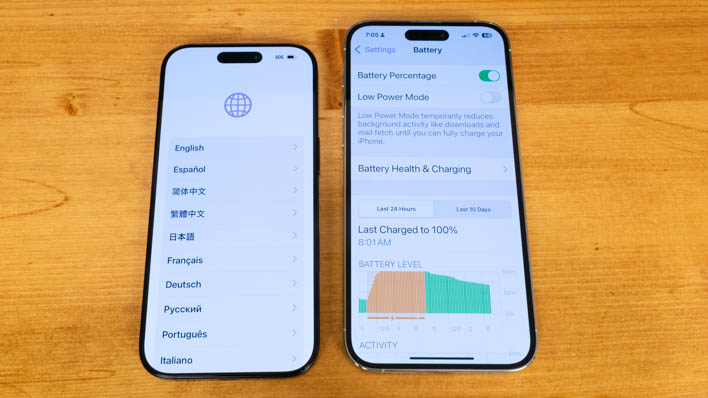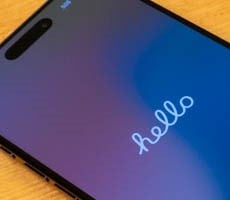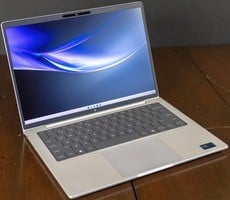iPhone 16 Pro Review: Solid Upgrades And Future Apple Intelligence
|
Apple iPhone 16 Pro (Starts at $999, as reviewed $1,099)
Apple launched the iPhone 16 Pro in an unfinished state, and it remains to be seen if Apple Intelligence will be worth the wait, but performance is excellent. |
|||

|


|
||
This year, something about the iPhone 16 lineup feels unfinished. You don't have to wonder what that is, though -- it's the software. Apple has been talking a big game ever since WWDC when it announced Apple Intelligence, the company's own take on AI using the purpose-built neural processor that's been built into every iPhone for several years. However, the latest iPhones launch with the promise of AI yet to come.
Despite that nagging unsatisfying hole in Apple's software ecosystem, the iPhone 16 family, specifically the Pro models, bring something new to the table. Slightly bigger displays, narrower bezels, a heaping helping of performance, and a curious new trackpad-like button for camera controls. Is there enough here for the Apple faithful to upgrade? Is the iPhone 16 Pro the phone to get? That's what we're here to answer today. But first, let's meet the iPhone 16 Pro.
Apple iPhone 16 Pro Specifications
This year, Apple dropped the "Bionic" name from its SoC and instead, the iPhone 16 Pro (and the Pro Max, which is just a bigger version of this device) gets the A18 Pro. Like the last several iPhones, the A18 Pro has a total of six CPU cores, where two are high-powered performance cores, and the other four are power-sipping efficiency cores, all of which support Armv9.2-A, as previously predicted.
Like the iPad Pro's M4 SoC, the A18 Pro is built on TSMC's latest N3E process, and according to Geekbench 6 it can top out at 4.04 GHz and has 8 GB of memory. The M4 has LPDDR5x-7500, though it's not yet known if the iPhones have similarly-rated memory. Apple doesn't publish all these specs, much to the chagrin of hardware geeks like us here at HotHardware.

At any rate, there's also a 6-core GPU on tap, and it has Apple's second generation ray tracing engine on board. Last year, Apple bet big on AAA titles with ray tracing making their way to iOS, iPadOS, and macOS, which debuted with Assassin's Creed Mirage. There hasn't really been a huge uptick of high-budget, high-fidelity titles infiltrating the Mac or iPhone just yet. However, that may change as the hardware is starting to make its way to the masses -- even the base model iPhone 16 supports the latest graphics features of Apple's Metal graphics API.
Of course, Apple Intelligence is the key feature for iOS 18 this year, and the iPhone 16 Pro has Apple's fastest Neural Engine to date. The first Neural Engine dates all the way back to 2017, but the only non iPhone 16 users who will have access to Apple's latest on-device AI will be iPhone 15 Pro users, and this year's model represents a pretty significant step up in performance. We'll measure just how much performance later.
Our review unit iPhone 16 Pro has 256 GB of NVMe storage, which has been the baseline required for the camera to capture ProRes 4K video at 60 fps; the 128 GB model is locked out of that fun. A maximum of 1 TB is available regardless of whether buyers go for the 16 Pro or the larger 16 Pro Max. Wireless connectivity comes courtesy of a Snapdragon X75 modem, which supports mmWave 5G and Gigabit 4G LTE. No, Apple still isn't using its own modems, which it purchased from Intel more than five years ago.
iPhone 16 Pro Design and Features
The iPhone 16 Pro is nearly indistinguishable from its predecessors, save for the new Titanium-themed colorways and the ever-so-slightly larger bodies. The iPhone has basically looked the same for the last four years, which is a little surprising for Apple, but we suppose a "rounded rectangle" can only look so different year to year. Our review unit came in Black Titanium, but there are several other neutral colorways that probably won't draw too much attention.If you want colors that pop, there's always the non-Pro iPhone 16, which is apparently very repairable and comes in some snazzy shades. Another family member upgraded to the iPhone 16 Plus at the same time we got the iPhone 16 Pro in hand, and for a lot of folks that might actually be the phone to get. But we'll touch on that later.
This year, the iPhone 16 Pro gets a 6.3" display, up from 6.1" of its predecessor, and a slightly higher 2622x1206 resolution. Despite the larger size, the resolution still works out to a crisp 460 ppi, which is on par with Android flagships. That display is surrounded by slightly thinner bezels than the several years prior, going back to the iPhone 12 Pro lineup.
Incidentally, those thinner bezels might lead to unresponsive touch detection. That's something we haven't experienced for ourselves, but since this iPhone was acquired at retail for personal use, it went into a case with slightly raised edges immediately after these photos were taken. That does potentially lend some credence to the idea that rogue palm detection interferes with legitimate touches. You're holding it wrong, as Steve Jobs might have said.
But seriously, if you use a case, the Spigen Ultra Hybrid MagFit for the iPhone 16 Pro is $22 on Amazon. The iPhone 14 Pro Max version served me well for two years with that phone. The iPhone 16 Pro version is very slim and still allows easy access to all of the hardware buttons on the device. If you're upgrading to any of the new iPhones, do yourself a favor and grab one, and also grab Spigen's EZFit tempered glass screen protectors while you're at it.
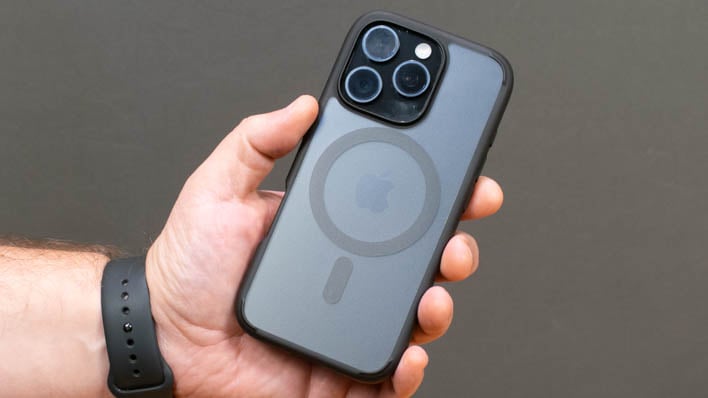
The panel, as it's been since Apple introduced ProMotion, is an LTPO (low-temperature polycrystalline oxide) OLED display which supports variable refresh rates up to 120 Hz. It looks smooth in motion, but that's nothing new. And honestly, it's one of only three distinguishing features that really separate the Pro lineup from the vanilla iPhone 16 models.
Just like last year's iPhone 15 Pro family, the display's maximum brightness rating is still 2,000 nits peak while used outdoors. What's new this year is the minimum brightness now bottoms out at just 1 nit. Even in a pitch-black room it's awfully hard to see, so you won't keep anybody awake with screen light if you doomscroll all night long.
On the bottom of the phone sits a USB-C port, which finally came to the iPhone with last year's iteration. Just like the difference between the iPhone 15 and 15 Pro, the iPhone 16 Pro's USB-C port supports 10 Gbps USB 3.2 Gen 2, whereas the vanilla iPhone 16's port is limited to USB 2.0 speeds, just like the Lightning port that came before it. That's the second distinguishing feature, as we mentioned above.
We didn't get a chance to review the iPhone 15 family, so now is a good time to note that the previous (and beloved) hardware mute switch is nowhere to be found. It was replaced last year with a multi-purpose action button that can still mute and unmute, but also invoke the camera, Siri, the flashlight, or a handful of other less-useful options. However, you can only choose one; there's no double-click action and there's no long-press action. We opted for the flashlight, since honestly it's super rare that I ever take my phone off of mute. Camera would have been another option, except we don't need it because of another addition.
The iPhone 16 Pro's only new hardware feature (beyond expanding dimensions, that is) is the camera control. We'll talk more about all of its uses a little later on. It's an interesting way to try to innovate, but we feel that Apple didn't quite execute as well as it could have. The button is surprisingly stiff, which makes taking a photo less pleasant than just touching the shutter button on the display. We'll talk more in-depth about how this all works and how the camera performs in a moment.
iPhone 16 Pro Charging and Battery Life
As we'll discuss in a little bit, not all of the benchmarks that we run on Android phones are available for iPhones. One of those is UL PCMark Work, which is sadly limited to Android, so the battery life story here is going to be kind of anecdotal. C'est la vie, that's what we're stuck with.And, anecdotally, we'd classify the battery life as good enough for a daily driver, but not great. I acquired this phone for personal use, rather than laboratory testing, and that means it needed to be activated on a cellular network (Verizon in central Illinois, which now has 5G UWB available). It's also got all of the apps I personally rely on daily, and gets plenty of notifications -- basically it was used just like most people use their phones. So with all data, photos, apps, and settings fully migrated and with two to three hours of screen-on time, the battery has usually been around 45-50% after a 17-hour day off the charger.
That's not quite a two-day battery, at least not comfortably, but it's certainly enough of a buffer for us to make it a day. Taking an hour-long walk in the morning accompanied by a playlist on Apple Music and a journey in Pokemon Go (which uses location services constantly to update the map) will drop the battery to 90% before doing anything else in the day. That night the battery ended at 38% and over four hours of total screen-on time. Still plenty of capacity that I never felt the need to charge mid-day or anything. Considering the battery holds 3,582 mAh at 3.892v (just shy of 14 Watt-hours), that's not too shabby.
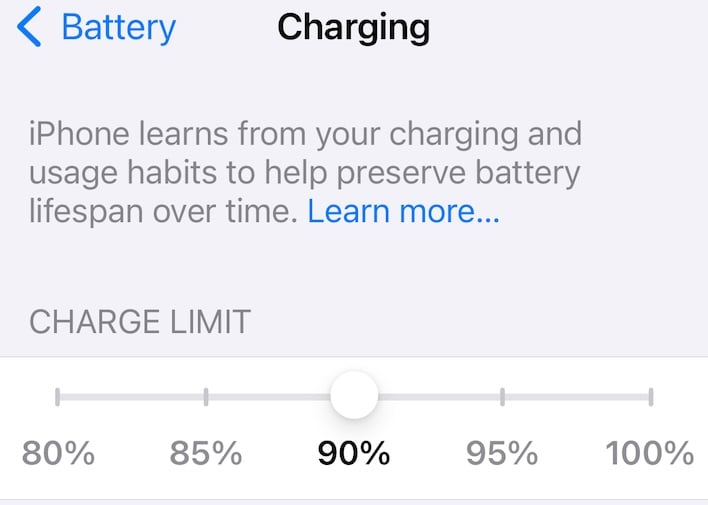
To try to keep the battery in tip-top shape, Apple has been introducing controls slowly over the last couple of years that allow users to limit how charged their iPhones get. Batteries degrade over time, but if they never go past 80 or 90%, they'll typically last longer. This year's iPhones get a slider in the Battery area of the Settings app that can limit the charge in 5% increments between 80% and 100%.
Once I was done experimenting with battery life, this was set to 90% on this phone and hopefully it will increase its useful life without the need to get a replacement. The first day of this experiment, the phone wound up at 30% at bedtime, which is enough of a buffer to probably last a day. However, heavy use might require more charging, or might require bumping this back up to 100%.
While our battery life experience is anecdotal, charging is something that can easily be quantified. The iPhone 16 Pro supports charging via USB-C or MagSafe. USB-C is technically fast charging, but it's limited to 20 Watts. That's a lot less than competing smartphones, but Apple says that's enough to bring an iPhone 16 Pro back from a dead battery to 50% charge in about 30 minutes.
Whatever charger you use, it'll have to be purchased separately. Apple includes a USB-C to C cable in the box, but chargers have been a no-show for several years at this point. The iPhone 16 Pro supports USB-C Power Delivery 2.0, though PD 3.0 chargers should be backward-compatible. If you need to pick one up, Anker's two-pack of USB-C 20 W chargers that comes with some extra USB-C cables as well is only $13, so it's easy to toss one into a backpack for the road. But that price also makes us feel like smartphone makers (all of them these days skip the charger) are being unnecessarily cheap here.
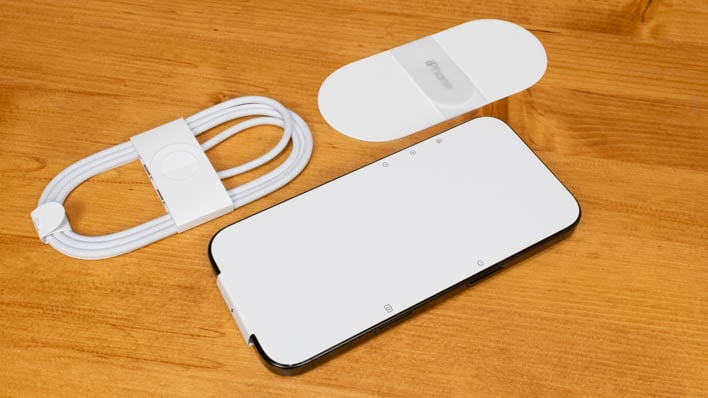
For wireless charging, the iPhone 16 Pro supports both Apple's proprietary MagSafe as well as the more open Qi and Qi2 standards. With MagSafe, it can do the same 50% in 30 minutes, but it needs a 30 Watt AC adapter to do it. If you stick to the Qi or Qi2 wireless standards, that charging speed drops quite a bit. Qi is limited to just 7.5 Watts, while Qi2 chargers can deliver twice that at 15 Watts. MagSafe adapters have the added benefit of activating Standby mode on the iPhone, in which the screen remains lit fully with one of several different clock faces and other widget dashboards depending on the user's preference.
All of that is a far cry from, say, the Samsung Galaxy S24 Ultra. That Android phone can charge from 0 to 65% in the same 30 minutes, and that's with a larger 5,000 mAh battery. That's because rather than being limited to 20 Watts, the Samsung can pull a maximum of 45 Watts via USB-C Power Delivery from a PD 3.0 charger.

